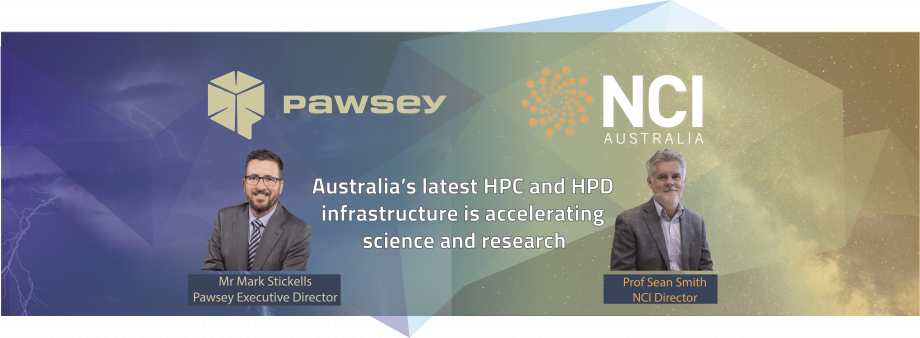In recent years, Australia’s Tier-1 High Performance Computing (HPC) centres, the Pawsey Supercomputing Research Centre and National Computational Infrastructure, have undergone significant infrastructure upgrades.
In its second full year of operations in 2021, NCI’s supercomputer, Gadi, has been on track to do more than 800 million hours of computing for its users. With more compute usage than in Gadi’s first year, NCI continues also to grow the curated, analysis-ready data collections stored and accessible onsite for researchers through significant international and national partnerships.
In early 2021, Pawsey unveiled its super-fast tribute to the quokka, Setonix. Setonix, whose first phase has been deployed at the Centre, is an HPE Cray EX supercomputer, 30 times more powerful than its Magnus and Galaxy predecessors. The world watches as this new system is commissioned, with state-of-the-art architectures new to the supercomputing game.
As Pawsey continues and undertakes new international partnerships such as with CSC, the host site for the LUMI supercomputer, NCI continues their global engagement with places like NASA, the US Geological Service, the European Space Agency, the UK Meteorological Office, the Bureau of Meteorology and Geoscience Australia. At the same time, both National facilities work with a range of Australian science infrastructure providers supported by the Country’s National Collaborative Research Infrastructure Strategy.
Through the Australasian Leadership Computing Grants (ALCG) and the Pawsey Centre for Extreme scale Readiness (PaCER) programs, NCI and Pawsey, respectively, have provided Australian researchers with the resources and technical support to tackle complex, grand challenges facing science today.
“The Australian research community has once again demonstrated the high demand for high-performance computing across a wide range of fields. The high-quality applications received in this round [of ALCG grants] build on the growing depth and breadth of compute-driven investigations and are a testament to the tremendous scientific talent in Australia,” said NCI Director, Professor Sean Smith. As a result, 2021 saw a boost to Australian research, with 150 million units of computing time awarded to five research groups as part of the grants.
Ten research projects now have access to the first PaCER program to ready the Australian research community to make full use of Pawsey’s next era of supercomputing from late 2022. The PaCER program represents an opportunity for researchers to become exascale-ready, working on new algorithm designs and optimising codes, workflows, and data movement pipelines.
Dr Maciej Cytowski, Pawsey’s Head of Scientific Services, describes the PaCER program as: “a long-term partnership between researchers and Pawsey’s supercomputing specialists to achieve extreme performance on next-generation supercomputers. This infrastructure will unlock research at previously unavailable scales to benefit not just PaCER participants but eventually the broader research community”.
Six of the ten PaCER projects also have an allocation on the NCI’s supercomputer Gadi as the work undertaken through the Pawsey PaCER projects will translate to further research efficiencies in with NCI and with other supercomputing centres worldwide.
With this growth in technology, performance and domain expertise, we must ensure the next generations of researchers have the supercomputing tools at their fingertips; and the knowledge of how to use them. So both organisations focus on training and education in support of Australian research.
The Pawsey Supercomputing Research Centre provides extensive, free training to researchers throughout 2021 via hybrid events, online training and a breadth of resources on their YouTube channel and Github. Partnering with The Carpentries will deliver digital research training to ensure Australian researchers can use and manipulate data to do cutting-edge research.
Similarly, NCI offers users access to bootcamps, skills refreshers, and specialised training sessions for beginners and advanced users. Scaling up in 2021 and into 2022, NCI’s growing training suite includes discipline-specific computational science courses, workshops and bootcamps, and regular helpdesk hours for building skills in the user community.
In 2022, NCI’s Gadi and the full deployment of Pawsey’s Setonix supercomputers will continue to accelerate Australian science. Researchers will be able to access a breadth of resources, tools and expertise so they can continue ground-breaking science.
As Tier-1 supercomputing providers to Australia’s research space, Pawsey and NCI will continue to be the strategic partners of choice for an ever-expanding community of users.
